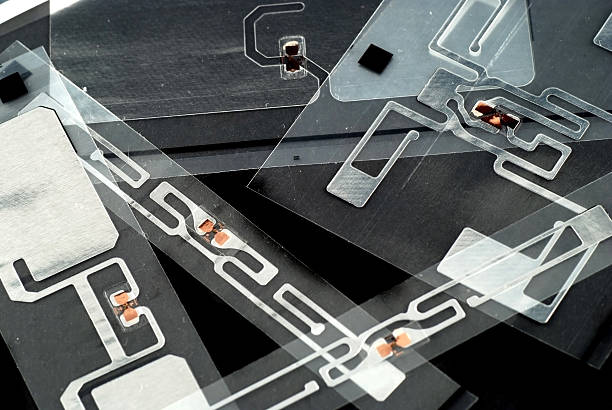RFID, or Radio Frequency Identification, can be a confusing field for those starting to learn about the technology. RFID comes in many different flavors, but an easy entry point from which to grasp RFID technology is to first look at frequency. In physics terms, frequency is the number of complete wave cycles passing a point in a second. This post will focus on ultra high frequency, or UHF, systems (433 MHz, 860-960 MHz). These systems are known for generating long read ranges relative to other operating frequencies.
In every UHF RFID system, there are four basic components:
Of all these components, the RFID tag varies the most and significantly impacts the overall success of the system. Form factors, price ranges, read ranges, attachment methods, etc. can make finding the best tag for the job a little daunting. When selecting the right RFID tag for your system, we have identified some core differences between UHF tags.
Three Important Component Differences Among RFID Tags:
1. IC Type
The IC (Integrated Circuit) is the brain of the RFID tag and stores the unique information on the tag. Some IC types can store more information than others. Generally speaking, most UHF RFID tags adhere to the Class 1 Generation 2 standard ( ISO 18000-6C) and use 96 bits of memory to store the EPC (Electronic Product Code). This is enough space to store 24 hexadecimal characters (0-9, A-F). However, some tags are more expensive because they have extended user memory to store more information on the RFID tag. For more information, check out our blog post on chip memory in UHF RFID tags.
2. Antenna
For general purposes, the size of the tag’s internal antenna will be a strong indicator of the tag’s read range. Small RFID tags contain small antennas which leads to shorter read ranges, while large RFID tags (with larger antennas) will have longer read ranges. Additionally, RF antennas can be strongly influenced by their surrounding environment. Water and metal absorb and reflect RF energy respectively and, in doing so, may decrease an RFID system’s performance (read ranges and read rates). However, the properties of metal can be used as an advantage if the correct tag is used.
On metal RFID tags, which have special backings, leverage their metallic surroundings to harness reflected energy and increase read ranges. Background insensitive tags have foam material around the antenna so that the they can be placed both on and off metal. An additional factor regarding tag antennas that affects how they act in an RFID system is the number of dipoles the tag contains. In short, a dual dipole RFID tag will be readable from more orientations, where as a single dipole RFID tag may need to be read in a more controlled orientation. If you’d like to know more about what affects read range in an RFID system, please see our post about factors that affect RFID read range.
3. Encasement
When we’re referring to encasement, we’re talking about the physical form factor of the RFID tag. Depending on the application, RFID tags come in a variety of shapes and sizes.
The most basic delivery of a RFID tag is the RFID inlay. The inlay provides the RF functionality of any RFID tag, but only contains the IC and antenna. Inlays can be wet, which signifies that they have adhesive on their backs, or dry, which means they contain no adhesive.
The next step up in complexity is the RFID label. The best way to explain the difference between an RFID inlay and an RFID label is that the label contains an RFID inlay, but could also function on its own without RFID. Even if the RFID inlay were absent, the label would still contain a barcode and/or human readable information. The label can be paper or synthetic depending on what kind of application the user desires.
Lastly, the RFID inlay can be placed in some type of encasement. This is the most expensive and diverse way of delivering an RFID tag. The case can protect from impact, temperature, water or metal environments. Specialized encasements can also create unique attachment options like wires, epoxy, embedding or bolts, screws, or rivets.

Conclusion
If you would like to learn more about all things RFID, check out our website, or contact us.